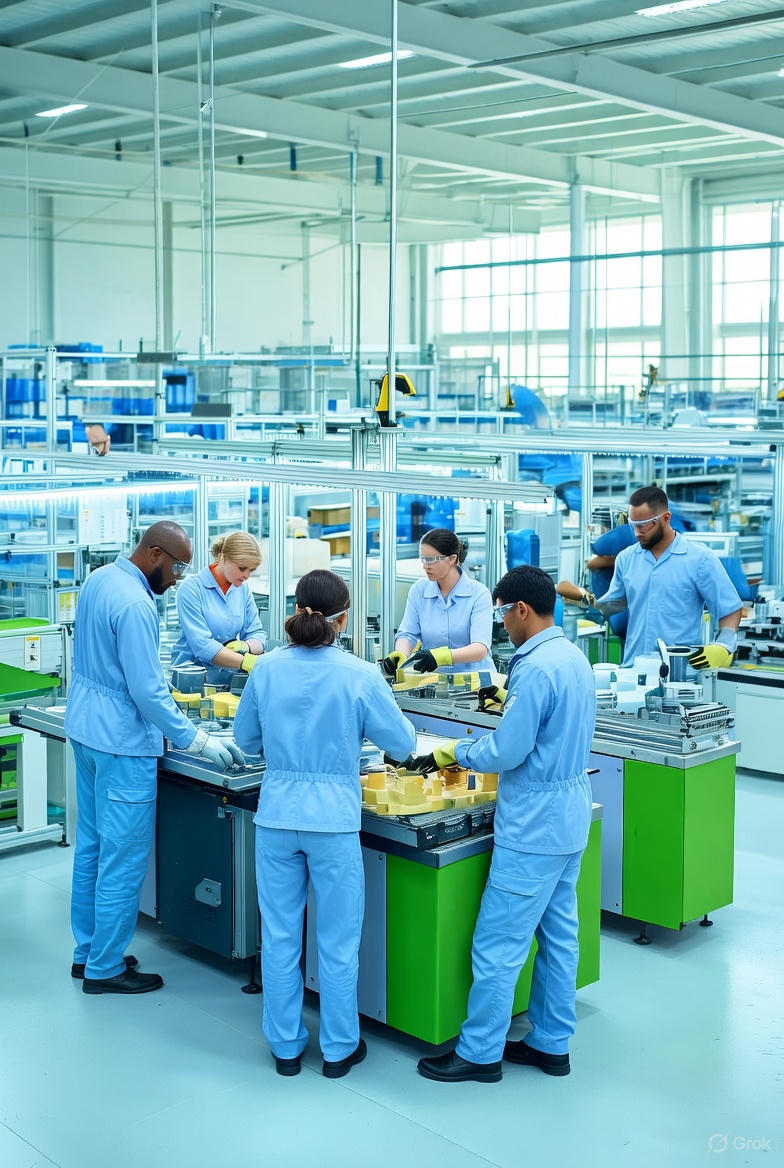What is Kaizen? Unlocking Continuous Improvement on the Shop Floor
By Jordan Cota
In the fast paced world of manufacturing, where every second counts and margins are razor thin, the quest for efficiency never ends. That’s where Kaizen comes in, a simple yet powerful philosophy that’s been transforming factories for decades. If you’re a small to medium sized manufacturer (SME) grappling with rising costs, inconsistent quality, or outdated processes, understanding Kaizen could be your game changer. At Glassdome, we’ve seen firsthand how this approach, powered by primary process data, drives real shop floor improvements.
Kaizen, a Japanese term meaning “change for the better” or “continuous improvement,” originated in a post World War II Japan. It gained global fame through Toyota’s lean manufacturing system, where it became a cornerstone of the Toyota Production System (TPS). Unlike massive overhauls that disrupt operations and drain resources, Kaizen focuses on small, incremental changes made consistently over time. The idea is that these tiny tweaks, suggested and implemented by everyone from executives to frontline workers, add up to significant gains in productivity, quality, and waste reduction.
At its core, Kaizen is about fostering a culture of empowerment and observation. It encourages employees to identify inefficiencies in their daily routines and propose solutions. This isn’t top down management; it’s grassroots innovation. For instance, a machine operator might notice that a tool changeover takes too long, leading to downtime. Through Kaizen, they could suggest a simple reorganization of the workspace, shaving minutes off each cycle. Multiply that across shifts and machines, and you’re looking at hours saved weekly, without investing in new equipment.
But here’s where it gets exciting for SMEs: Kaizen thrives on data. Not just any data, but primary process data straight from the shop floor. This includes real time metrics like machine utilization rates, cycle times, defect logs, and energy consumption, captured directly from sensors, PLCs, or IoT devices on your equipment. In traditional setups, this data often sits siloed in spreadsheets or forgotten logs. Kaizen flips the script by using it to pinpoint problems and measure improvements objectively.
Think about it: Without data, improvements are guesswork. You might rearrange an assembly line based on gut feel, only to find it worsens bottlenecks elsewhere. Primary process data provides the evidence needed to validate ideas. For example, analyzing OEE (Overall Equipment Effectiveness) data might reveal that a press machine is only running at 60% efficiency due to frequent stops. A Kaizen event, a focused workshop, could then target those stops, perhaps by standardizing maintenance protocols, leading to a 15 to 20% uplift in output.
At Glassdome, we specialize in making this data accessible and actionable for SMEs. Our platform connects seamlessly to your existing machinery, aggregating primary process data into intuitive dashboards. No need for costly IT overhauls; we handle the integration so you can focus on insights. We’ve helped manufacturers in sectors like automotive and forklifts spot hidden inefficiencies that traditional audits miss. One client, a mid-sized metal fabricator, used our tools to track folding process data. By applying Kaizen principles, they reduced scrap rates by 7% through minor adjustments in temperature controls and operator training, all driven by data trends they hadn’t noticed before.
The beauty of Kaizen for SMEs is its scalability. Larger corporations might afford Six Sigma black belts or consultants, but Kaizen requires minimal upfront investment. Start with “5S” methodology, Sort, Set in order, Shine, Standardize, Sustain, to organize your shop floor. Then layer in data-driven tools. Encourage daily huddles where teams review key metrics and brainstorm fixes. Over time, this builds a resilient operation that’s adaptable to market shifts, like supply chain disruptions or new regulations.
Of course, implementing Kaizen isn’t without challenges. Resistance to change is common, especially in family run businesses where “we’ve always done it this way” reigns supreme. The key is leadership buy-in and training. At Glassdome, we offer guided analytics to ease the transition, showing quick wins to build momentum. Another hurdle is data quality, garbage in, garbage out. That’s why our system emphasizes clean, primary sources, filtering out noise for reliable insights.
The payoffs? Substantial. Studies from the Lean Enterprise Institute show that Kaizen adopters often see 10 to 30% productivity boosts within the first year. For SMEs, this means competing with bigger players without scaling up staff or space. Reduced waste lowers costs, improved quality boosts customer satisfaction, and empowered employees reduce turnover. In an era of Industry 4.0, blending Kaizen with digital tools like ours positions your shop floor as a hub of innovation.
Kaizen isn’t just a buzzword; it’s a mindset that turns everyday observations into extraordinary results. By leveraging primary process data, SMEs can make informed, incremental improvements that compound over time. If you’re ready to elevate your manufacturing game, start small: Audit your shop floor data today. At Glassdome, we’re here to help you harness it for lasting change. What’s one inefficiency you’d tackle first? Drop a comment below, we’d love to hear your thoughts.
Want to start measuring your Kaizen Results?
Get the production monitoring system that makes any factory a smart factory


